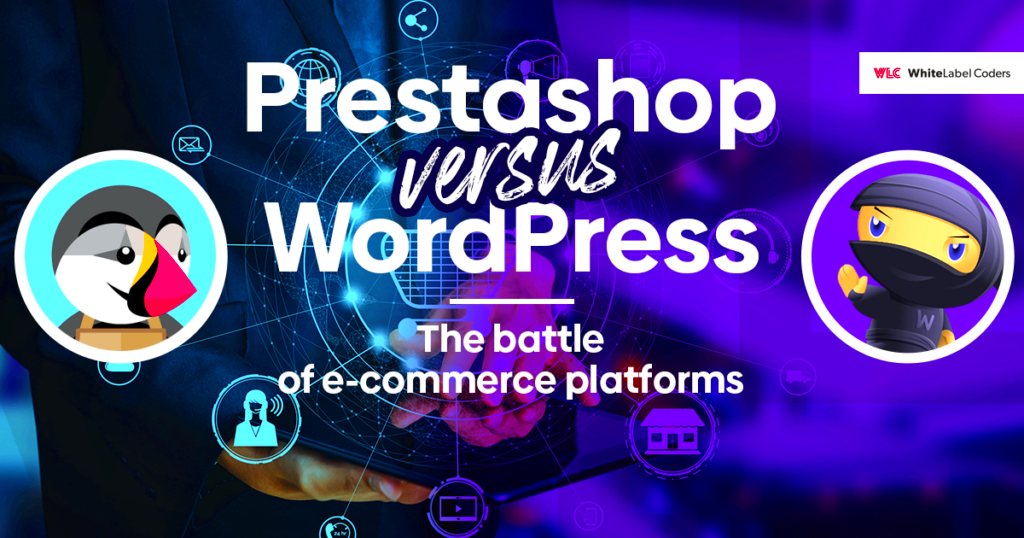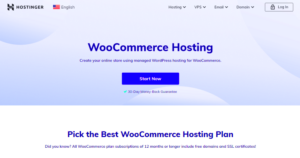When it comes to building dynamic websites, two open-source platforms often stand out: PrestaShop and WordPress. Each has its unique strengths, and when combined, they can offer a powerful solution for anyone looking to create an engaging online presence. PrestaShop is primarily tailored for e-commerce businesses, while WordPress is a versatile content management system that powers millions of blogs and websites. Let’s explore what makes these platforms special and why they are worth considering, especially when used together.
The Benefits of Using Open-Source Platforms

Open-source platforms like PrestaShop and WordPress offer a treasure trove of advantages for both developers and users. Here are some key benefits:
- Cost-Effective: Since both PrestaShop and WordPress are free to use, you can save a significant amount on software costs. You only need to pay for hosting and any premium themes or plugins you choose to enhance functionality.
- Community Support: Open-source platforms boast large communities of developers and users who contribute to forums, create tutorials, and develop plugins. This means help is usually just a forum post away.
- Flexibility and Customization: Both platforms allow for extensive customization through themes and plugins. Whether you’re looking to add a new payment method in PrestaShop or a contact form in WordPress, the options are virtually limitless.
- Regular Updates: Open-source software is frequently updated to improve security, functionality, and features. This ensures your site remains secure and competitive in the digital space.
- Ownership and Control: With open-source solutions, you have complete ownership of your website and data. You’re not tied to a vendor’s rules, giving you the freedom to make any changes you deem necessary.
Using PrestaShop and WordPress together can leverage these benefits, making it easier than ever to launch and manage a successful online business. Imagine running a captivating blog on WordPress while seamlessly managing your online store through PrestaShop—an unbeatable combination!
Overview of PrestaShop

PrestaShop is a powerful open-source e-commerce platform that allows users to create and manage online stores with ease. Originally launched in 2007, it has gained immense popularity due to its extensive features, customizable design, and robust performance. It’s perfect for both small and large businesses looking to establish an online presence. So, what makes PrestaShop stand out?
- Flexibility: PrestaShop is highly versatile and can be tailored to individual business needs. Whether you’re selling physical products, digital goods, or services, PrestaShop can accommodate your requirements.
- Numerous Features: With over 600 built-in features, PrestaShop allows store owners to handle various e-commerce functionalities such as inventory management, payment gateways, and customer relationship management.
- Templates and Add-ons: PrestaShop offers a wide array of themes and add-ons. You can choose from thousands of templates to create an attractive storefront, and integrate additional functionalities to enhance user experience.
- Community Support: Being open-source, PrestaShop has a vast community of developers and users who contribute to forums and resources. If you ever run into a hiccup, you can find valuable support and advice.
In comparison to other e-commerce platforms, PrestaShop is particularly known for its scalability, meaning that as your business grows, your online store can grow with it. Plus, it doesn’t take a tech genius to set it up; even a newcomer can start building their store with user-friendly features. All these factors make PrestaShop a preferred choice among e-commerce businesses looking to flourish in the digital world.
Overview of WordPress
WordPress isn’t just a blogging platform anymore; it has evolved into a robust content management system (CMS) that powers over 40% of websites on the internet. Launched in 2003, WordPress is open-source software that allows anyone to create beautiful websites and blogs without needing to dive deep into coding. Let’s explore what makes
- User-Friendly Interface: With its intuitive dashboard, even those with zero technical skills can easily navigate and manage their site. Writing and publishing posts, adding images, and customizing the design can all be achieved with just a few clicks.
- Vast Theme and Plugin Ecosystem: WordPress boasts thousands of free and premium themes and plugins. This means you can easily customize the look and functionality of your site to fit your needs. Whether you want to add a contact form, optimize for SEO, or improve site speed, there’s a plugin for that!
- SEO Friendly: WordPress is designed with search engines in mind, making it easier for websites to rank high. With plugins like Yoast SEO, you can optimize your content and enhance your online visibility.
- Active Community: Being one of the most widely used CMS platforms, WordPress has a massive community. From forums to tutorials, there’s a wealth of resources for users seeking support or looking to learn more.
Overall, WordPress is a flexible solution for anyone wanting to go beyond simple blogging. It’s suitable for everything from personal websites to complex business portals. Coupled with its extensive customization options and community support, it truly offers a great experience for users of all skill levels.
Integrating PrestaShop and WordPress
Integrating PrestaShop and WordPress can unlock a world of possibilities for your eCommerce site. By combining the robust functionalities of PrestaShop’s eCommerce capabilities with the versatile content management system of WordPress, you can create a seamless user experience that boosts your site’s performance and enhances your marketing efforts.
There are several ways to integrate these two powerful platforms, and here are some popular methods:
- WordPress Plugins: Use specialized plugins like “PrestaShop Integration” or “WP PrestaShop” that allow you to connect the two platforms easily. These plugins often provide synchronization of products and customer data.
- API Connection: If you’re comfortable with coding, you can use the PrestaShop API to fetch product data directly into your WordPress site. This allows you to create custom pages that display PrestaShop products without leaving the WordPress environment.
- Theme Customization: You can design your WordPress site to look similar to your PrestaShop store for a consistent brand experience. By adjusting your themes and stylesheets in both platforms, it will feel like a singular entity to your visitors.
- Single Sign-On (SSO): Implementing SSO enables users to log in to one platform and gain access to the other without needing separate credentials. This enhances usability and keeps users engaged.
With these methods, the integration process can be smooth and efficient. In no time, you’ll have a beautifully unified website that leverages the unique strengths of both PrestaShop and WordPress!
Use Cases for Combining PrestaShop and WordPress
Combining PrestaShop and WordPress can yield exceptional results, tailored to various business needs. Here are some use cases that illustrate how leveraging both platforms can enhance your website’s functionality and overall performance:
| Use Case | Description |
|---|---|
| Blogging and Content Marketing | WordPress excels in content management. By integrating it with PrestaShop, you can create in-depth blog posts that promote your products, improve SEO, and drive traffic to your store. |
| Showcasing Products | Use WordPress to design an attractive landing page with detailed product descriptions, tutorials, and third-party reviews, making your PrestaShop products more appealing. |
| Enhanced User Engagement | Utilize WordPress’s community tools to build forums or discussion boards around your eCommerce niche, encouraging user interaction and loyalty. |
| Improved Customer Support | Integrate a knowledge base or FAQ section through WordPress to help users with common queries related to your PrestaShop products, thus reducing support workload. |
As you can see, the possibilities are endless when you merge the capabilities of PrestaShop and WordPress. Each platform fills in the gaps of the other, allowing you to provide an enriched experience for your customers!
Step-by-Step Guide to Setting Up the Integration
Setting up the integration between PrestaShop and WordPress can seem daunting, but with a clear, step-by-step approach, you’ll find it’s quite manageable. Let’s break it down!
- Step 1: Choose Your Hosting
First, ensure you have a reliable web hosting service that supports both PrestaShop and WordPress. Look for features like SSL certificates, reliable customer support, and easy management tools.
- Step 2: Install PrestaShop and WordPress
Use the installer provided by your hosting service to set up both platforms. Many hosts have one-click installations to simplify the process.
- Step 3: Select a Theme
For a seamless experience, either choose the same theme for both platforms or ensure that their design styles are complementary.
- Step 4: Install Integration Plugins
Plugins play a vital role in connecting PrestaShop and WordPress. Some popular options include:
- WP PrestaShop Integration
- PrestaShop Module for WordPress
- Yoast SEO for PrestaShop
- Step 5: Configure the Plugins
After installing the plugins, you’ll need to configure them. This usually involves entering API keys or customizing settings to fit your needs.
- Step 6: Sync Your Content
Decide which products or posts need to be visible on both platforms and set up the necessary syncing parameters.
- Step 7: Test Everything
Before going live, conduct thorough testing. Check product links, ensure seamless navigation, and verify that both platforms are correctly communicating.
Once you’ve gone through these steps, you’ll have a beautifully integrated PrestaShop and WordPress setup to enhance your online presence!
Best Practices for Managing Both Platforms
Managing PrestaShop and WordPress together can maximize your online store’s potential, but keeping them organized is key. Here are some best practices to consider.
| Practice | Description |
|---|---|
| Regular Updates | Keep both platforms, themes, and plugins updated to the latest versions to ensure security and performance. |
| Consistent Branding | Maintain a consistent brand voice and design across both platforms for better customer recognition. |
| Optimize for SEO | Use SEO tools on both platforms to drive more traffic and improve your site’s visibility in search engines. |
| Backups | Schedule regular backups of both your e-commerce and content sites to prevent data loss. |
| Monitoring Performance | Use analytics tools to monitor the performance of both platforms and adjust your strategies accordingly. |
| Clear Navigation | Ensure that your users can easily navigate between your WordPress content and PrestaShop products without any confusion. |
By following these best practices, you can effectively manage both PrestaShop and WordPress, creating a fantastic user experience and driving more sales!
Common Challenges and Solutions
Using both PrestaShop and WordPress together can open up a world of possibilities for your e-commerce venture. However, like any powerful duo, they come with their own set of challenges. Let’s explore some of the common issues you might face and the solutions to tackle them effectively.
- Integration Difficulties: Connecting PrestaShop and WordPress can be challenging due to different architectures. You might find it hard to sync them.
- Data Redundancy: When using both platforms, you may end up duplicating efforts, especially when managing products and content.
- Performance Issues: Running two platforms can slow down your website, affecting user experience.
- Learning Curve: Each platform has its own quirks, which might require time to master.
Solution: Utilize plugins such as “WP PrestaShop” or APIs to facilitate smoother communication between WordPress and PrestaShop. These plugins help bridge functionality gaps.
Solution: Create a unified strategy for data management. Decide what content will reside on WordPress and what will be handled through PrestaShop to reduce overlap.
Solution: Optimize both sites by using caching solutions, minimizing the number of plugins, and choosing a reliable hosting service. Consider a Content Delivery Network (CDN) to improve load times.
Solution: Invest time in training or leverage online resources and communities for support. Forums, tutorials, and documentation can greatly ease the learning process.
By tackling these challenges head-on, you can leverage the strengths of both platforms and create a robust e-commerce site that stands out in today’s competitive landscape.
Conclusion: Maximizing E-commerce Potential with PrestaShop and WordPress
Bringing together PrestaShop and WordPress can be a game changer for your e-commerce strategy. Each platform excels in its own right: PrestaShop is fantastic for managing complex product catalogs and transactions, while WordPress shines in blogging and content management. Here’s how to maximize your e-commerce potential when using these two platforms together:
- Leverage SEO: Use WordPress’s powerful blogging tools to create content that drives organic traffic. Written content helps improve your site’s SEO, which can lead to higher visibility and, ultimately, sales.
- Create Engaging Content: Use WordPress to maintain a blog that shares tips, product reviews, and news. This content will engage your audience, making your brand more relatable and trustworthy.
- Efficient Product Management: Let PrestaShop handle your e-commerce needs—inventory, customer transactions, and payment processing—while WordPress focuses on content marketing and digital engagement.
- Utilize Plugins and Extensions: Integrate powerful plugins on both platforms to enhance functionality. Whether it’s email marketing tools or social media integration, these add-ons can boost your online presence.
In conclusion, the successful marriage of PrestaShop and WordPress creates a dynamic e-commerce platform that can help you reach new heights. Embrace the unique strengths of each platform, tackle challenges as they come, and you’ll be set to maximize your online sales potential!



